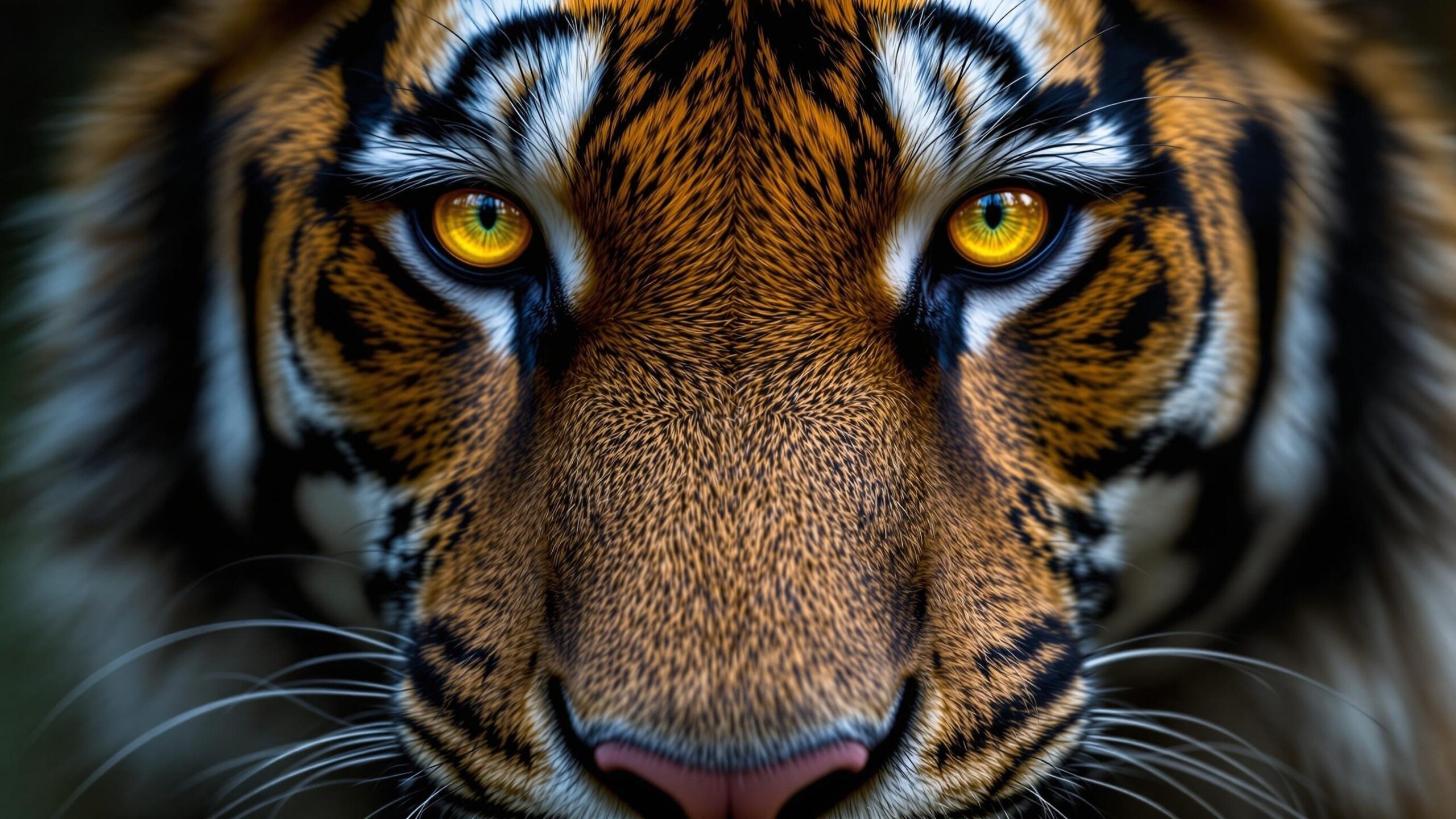The Indochinese Tiger: Elusive Guardian of Southeast Asia
The Indochinese tiger (Panthera tigris corbetti) is a subspecies of tiger native to Southeast Asia. With its stealthy movements, vibrant orange coat patterned with black stripes, and piercing amber eyes, this elusive big cat captures the imagination of wildlife enthusiasts, conservationists, and researchers alike. Although it is lesser-known than its Bengal or Siberian cousins, the Indochinese tiger plays a critical ecological role in the dense forests and rugged mountains of its range. This majestic predator symbolizes both the wild beauty and the fragile ecological balance of Southeast Asia.
A Glimpse into the Wild: What Is the Indochinese Tiger?
The Indochinese tiger is one of six surviving subspecies of tiger in the world today. Named after the British biologist Jim Corbett—who spent years studying and protecting wild tigers—the scientific name Panthera tigris corbetti reflects both its taxonomic roots and the region it inhabits. This subspecies historically roamed across a broad swath of territory, including Cambodia, Laos, Vietnam, Thailand, and Myanmar, with small pockets in southern China. Today, its presence is far more restricted, but its mystique endures.
What sets the Indochinese tiger apart is its size and appearance. Smaller and more slender than the Bengal tiger, the Indochinese tiger boasts a darker orange coat with narrower, closely spaced stripes. Adult males typically weigh between 150 to 195 kilograms (330 to 430 pounds), while females range from 100 to 130 kilograms (220 to 290 pounds). Their more compact build is an adaptation to the mountainous and forested environments they inhabit, making them agile and powerful hunters.
Habitat and Range: The Hidden Landscapes of Southeast Asia
The Indochinese tiger’s natural habitat is as captivating as the animal itself. Preferring remote, densely vegetated regions, these tigers are often found in tropical and subtropical forests, evergreen woodlands, and mountainous terrain. Their range once stretched uninterrupted across much of mainland Southeast Asia, including the Annamite Mountains along the Laos-Vietnam border and the Tenasserim Hills that run between Thailand and Myanmar.
However, the story of their distribution today is sobering. Habitat fragmentation, logging, agriculture, and infrastructure development have carved up once-continuous forests into isolated patches. As a result, the remaining populations are mostly found in protected areas and national parks, such as Thailand’s Western Forest Complex, one of the last strongholds for this subspecies. In Vietnam, Laos, and Cambodia, sightings have become extremely rare, and in some regions, they may be functionally extinct.
Despite these challenges, these elusive predators are known for their adaptability. They prefer areas with sufficient prey, water sources, and dense cover, avoiding human settlements when possible. Their solitary nature and preference for remote environments make them difficult to study, but it also highlights their need for expansive, undisturbed territories.

Behavior and Ecology: The Life of a Jungle Phantom
The Indochinese tiger is a solitary and territorial animal, with males occupying larger ranges that may overlap with the territories of several females. Like other tigers, it is a crepuscular predator—most active during dawn and dusk. Using stealth and powerful muscles, it stalks its prey quietly before delivering a sudden, lethal pounce.
Its diet includes a variety of ungulates such as wild boar, sambar deer, serow, and muntjac. In some areas, it may also prey on smaller animals like porcupines or monkeys. When natural prey is scarce, conflict with humans can arise, particularly if domestic livestock becomes a substitute target. However, such events are relatively rare and often exaggerated in local folklore.
Breeding can occur year-round, though there may be a peak during the cooler dry season. After a gestation period of about 3.5 months, a female tiger typically gives birth to 2 to 4 cubs. She raises them alone, fiercely protective for the first few months. Cubs begin hunting on their own at around 18 months and may leave their mother’s range after two to three years to establish territories of their own.
Indochinese tigers play a pivotal ecological role as apex predators. By regulating prey populations, they help maintain the balance of the ecosystem. Their presence is an indicator of a healthy, biodiverse forest—a fact that underscores their importance beyond their own survival.
A Tiger in Trouble: Conservation Challenges and Population Decline
Like all wild tigers, the Indochinese tiger is under severe threat. It is currently listed as Endangered on the IUCN Red List, with an estimated wild population of fewer than 350 individuals. Some estimates suggest the number could be significantly lower, especially outside of Thailand. The reasons for this decline are multifaceted and deeply interwoven with human activity. Habitat loss and fragmentation are among the primary challenges. Rapid development in Southeast Asia has led to deforestation on an unprecedented scale. Roads, plantations, and settlements cut through forests, isolating tiger populations and reducing their breeding and hunting grounds.
Poaching and illegal wildlife trade pose another existential threat. Tigers are hunted for their bones, skin, and other body parts, which are trafficked for use in traditional medicine, decorative items, and status symbols. Despite bans and international agreements, the black market for tiger parts remains alarmingly active in some parts of the region. Prey depletion is a less visible but equally critical issue. Even in protected areas, overhunting of deer, wild pigs, and other prey species by humans reduces food availability for tigers. Without adequate nutrition, tigers struggle to survive and reproduce. Additionally, human-tiger conflict—though not as widespread as often feared—can result in retaliatory killings. As people encroach further into tiger habitats, encounters become more likely, particularly if livestock or, in rare cases, people are attacked.

Glimmers of Hope: Conservation Efforts and Protected Areas
Despite the challenges, there is still hope for the Indochinese tiger. In Thailand, significant strides have been made in monitoring and protecting tiger populations. The country has become a beacon of hope for Indochinese tiger conservation, with some of the best-managed tiger reserves in the region. Advanced camera trapping and satellite collaring techniques have helped researchers gain deeper insights into tiger behavior, movement, and population dynamics. Anti-poaching patrols and ranger training programs have reduced illegal activities in key reserves. Moreover, conservation organizations are working with local communities to develop sustainable livelihoods that align with forest preservation.
International collaboration is also crucial. Cross-border conservation initiatives—like the establishment of transboundary wildlife corridors between Thailand and Myanmar—are helping to reconnect fragmented habitats and allow tigers to roam more freely. Educational programs and public awareness campaigns aim to shift attitudes about tigers, emphasizing their ecological value rather than their utility in traditional medicine or status display. In countries like Vietnam and Laos, conservationists are pushing for more rigorous law enforcement and habitat protection, although progress remains slow.
While reintroduction or captive breeding is not currently a viable large-scale solution for the Indochinese tiger, maintaining and strengthening wild populations is the most sustainable path forward. The tiger’s long-term survival depends on securing intact ecosystems where it can thrive naturally.
The Indochinese Tiger in Culture and Myth
Tigers have long held a special place in the cultures of Southeast Asia. Revered and feared in equal measure, the tiger appears in folklore, mythology, and even religious iconography. In Vietnam, it is sometimes known as “Ông Ba Mươi,” or “Mr. Thirty,” a reference to its stealth and deadly power—allegedly capable of killing a person in thirty seconds. In Thai and Burmese traditions, tigers are seen as guardians of the forest, creatures of immense spiritual energy.
Historically, tiger parts were believed to possess medicinal properties or convey strength and courage to those who consumed them or wore tiger-related charms. While these beliefs have deep roots, modern education and cultural shifts are gradually replacing superstition with science and conservation ethics.
The tiger also figures prominently in modern literature, art, and media, often symbolizing untamed wilderness or the fragile beauty of the natural world. As the Indochinese tiger teeters on the edge of survival, its presence in popular culture is a reminder of what stands to be lost.

A Subspecies on the Brink—but Not Forgotten
The Indochinese tiger is one of nature’s most iconic yet endangered creatures. Its story is not just about decline and danger; it’s also about resilience and the possibility of renewal. While its population numbers are perilously low, the dedication of researchers, conservationists, and local communities is breathing new life into efforts to save it.
To ensure its survival, the focus must remain on preserving large tracts of intact forest, curbing poaching, enforcing existing wildlife laws, and fostering regional cooperation. The success of tiger conservation in places like India and Russia offers a hopeful precedent. With sustained effort, it is still possible to reverse the downward spiral and secure a future for the Indochinese tiger. For now, it remains a ghost of the forest—a symbol of Southeast Asia’s wild past and a crucial player in its ecological future. Its roar may be heard less frequently today, but with commitment and care, it might one day echo through the jungles once more.
Final Thoughts: Why the Indochinese Tiger Matters
The Indochinese tiger is more than just a beautiful animal; it is a keystone species, a guardian of biodiversity, and a mirror reflecting our relationship with the natural world. Its fate is intertwined with that of the forests, rivers, and creatures that share its realm. Saving the Indochinese tiger is not just about conserving a single species—it’s about protecting the integrity of entire ecosystems and the cultural heritage of a region.
Every effort made on behalf of this tiger contributes to the broader cause of environmental stewardship. In learning about the Indochinese tiger, we come to appreciate the delicate balance of life in Southeast Asia—and why it’s worth fighting for.

